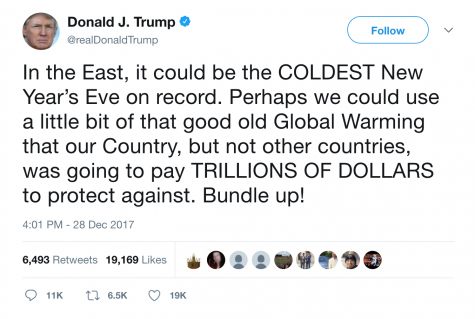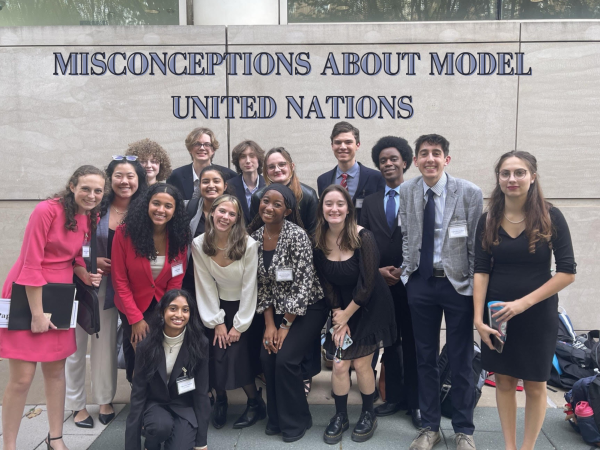Don’t go cold on climate change
January 30, 2018
The US holds a terrifyingly novel stance on the indisputable, real threat of climate change that fails to shock the world of the epidemic’s severity. The developed nation’s local and global representatives believe that the global phenomenons of climate change or global warming never existed. The controversy continues to stir as the temperatures increases and the President picks the side of nonbelievers.
“Evolution used to be the controversial topic, but no one really talks about it anymore because now climate change has all that focus,” AP Environmental Science teacher Julie Hopp said.
The irony of the term “global warming” defeats the meaning and purpose of what the term truly stands for. The proper term, “climate change,” holds true to nature of the changes in wind patterns, local weather, and the increasing severity of tropical weather storms. This change means more severe cold or warm weather, but regardless of temperature, these abnormalities damage the world’s ecosystems and fragile animal populations.
“Climate change is when we are seeing changes in the atmospheric temperature, in this case they’re going up, and so as a result they influence patterns of weather and that changes climate,” Hopp said.
Naysayers point to the cold temperatures as proof to the nonexistence of climate change strictly because of the misleading term: “global warming.” US President Donald Trump regularly fuels the fire of doubt through misleading tweets that disregard the severity of the rapidly changing global temperatures.

“Individual days when we have changes in weather is an anomaly within the weather pattern rather than something that is changing climate, it could be [a change in climate] if it repeated itself multiple times,” Hopp said.
Directly rooted in the name, climate change simply refers to a shift in the overall seasonal temperature or just the temperature change over an extended period of time. Weather, however, refers to local and immediate changes that later average to become the overall climate of the area. This uncommonly known distinction confuses the uneducated person who sees only day to day changes, not the overall trend of temperature.
Storms—an important yet disregarded element of climate change held true this year. Tropical storms become increasingly prevalent and aggressive as weather patterns change. This past year especially, an influx of hurricanes and tropical storms destroyed coastal cities and underdeveloped regions. Puerto Rico, devastated by Hurricane Harvey that hit in August and September of 2017, will never fully recover. Power outages throughout the region left hundreds stranded and desperate for help.
“Intense heating over the summer of the air and the water is the source of all of those hurricanes. The hotter the water, the more energy the storm has, and they have more detrimental effects,” Hopp said.
Using renewable energy sources that emit less greenhouse gases, especially carbon, and limit harmful waste may prevent further damage, but we cannot take back the damage already done. Due to the years of dumping pollutants into the atmosphere, climate change remains a scary reality, and unless dramatic changes in education and mindset take place, the negative aspects of climate change will continue to worsen. Educating those in power and using the already tangible evidence available to turn their attention to the reality of climate change will truly make America great again.

















